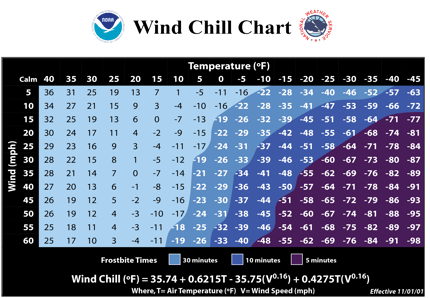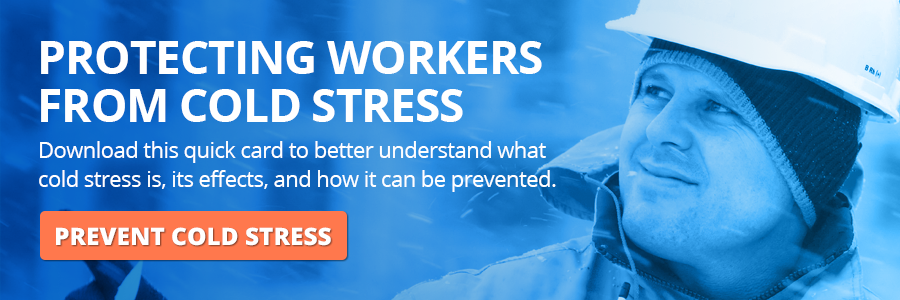Think Safety: How to Recognize the Stages of Frostbite
- Home
- Team EJP Blog
- Think Safety: How to Recognize the Stages of Frostbite
- Feb 18, 2017 7:51:44 AM
- Everett J. Prescott
When winter's wind bites at your skin, do you know how to tell whether it's doing damage to your skin in the process? Frostbite is a temperature-related injury to the skin that happens during deep cold, high winds or a combination of the two. But how do you recognize the warning signs of frostbite and what do you do when one of your workers has it? Here are some basic tips to help.
When is Frostbite a Danger?

The first thing you need to know about frostbite is the conditions when it is likely to occur. In general, it occurs when the wind chill factor is -17ºF or lower. This can happen in a half hour in temperatures as high as 10ºF when winds are faster than 55 miles per hour to temperatures of -35ºF with 5 mile per hour winds. As it gets colder or the wind gets faster, frostbite can happen even more quickly, taking only ten minutes with a drop of ten degrees or within five minutes another ten degrees below that. For this reason, it's important to monitor weather conditions and make sure your crew is dressed appropriately for the weather and takes frequent breaks in a heated environment. They should wear layers of warm clothing that wicks sweat away from the skin. Covered exposed skin and make sure your crew stays hydrated and moving.
How to Recognize Frostbite
Frostbite typically happens on exposed areas of the skin and extremities, usually the nose, cheeks, chin, ears, fingers and toes. It usually begins with sharp or burning pain with redness in the skin, often referred to as frostnip. As you lose feeling to those areas and blood flow is reduced, the skin will turn pale or white, which is superficial frostbite. If the cold injury is not treated, the body parts become dehydrated and freeze, permanent tissue damage or tissue death can occur. Because of the numbness that occurs with the injury, the affected individual may not realize they're being injured by the cold. It's vital that your crew know these symptoms and watch for it in each other. Here are the signs:
- White or yellow-grey skin
- Unusually firm or waxy skin
- Numbness and coldness in the affected area
How to Treat Frostbite
What to do if one of your workers shows the symptoms of frostbite? Here are a few tips to bear in mind:

- Move the worker to a warm area as soon as possible to begin the rewarming process.
- Try to reduce walking on frostbitten feet or toes unless it's absolutely necessary.
- Don't rub the frostbitten area with snow or rub it, as this can cause additional injury.
- Warm the affected area with warmer parts of the body, such as placing a frostbitten hand between legs or in an armpit.
- Avoid using heat pads, heaters, hot water or similar sources to warm the area as it is easy to burn the skin due to numbness. Instead, use lukewarm water or body heat to thaw the affected areas.
By knowing how to prevent, recognize and treat frostbite, you can help keep your crew working effectively and safely during the winter months. At Team EJP, we know how dangerous it can be working in the cold and wet during the cold times of the year. If you need help finding the right tools and products to keep your water utility running efficiently, please feel free to contact us today for more information.








